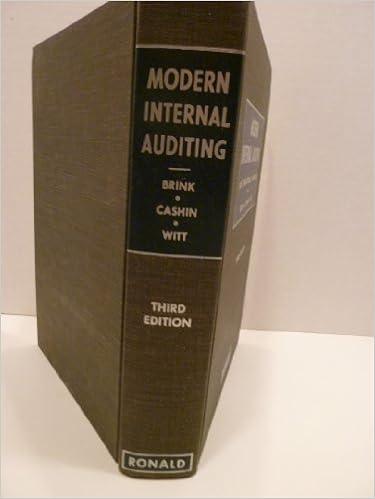

4.1 Models for Scheduling To avoid the situation of encountering the gapping phenomenon, the time factor, as well as mine capacity constraints on the tonnage to be mined can be introduced explicitly in the formulation of the open-pit scheduling problem. We begin by defining the following notations to be used in the problem formulation. In addition to the notations V and A in Section 1, let T = number of time periods. = profit derived from mining and processing block in time period t. tonnage of block i. = upper bound on tonnage mined in time period t. 1. if blocki is mined in time period f, or earlier 0, otherwise A mathematical model for the open-pit scheduling problem then is max (1-2) subject to EM(-4t= 1,...,T (3) EA, 1-1,..., 1 = 1,...,T, IEV iEV 0,1) EV, t = 1,..., As above, the set A captures both the slope and the immediate precedence constraints, 80 that the condition as a implies that block; has to be mined if blocki is to be mined, in time period As an example, consider the pit model in Figure 4.2, which is taken from Lerchs and Grossmann (1965). For each block, the value on top is the profit and the number at the bottom is the block index. Taking the profits as the initial profits, and solving the scheduling problem for T = 5, u' = 9, for all, and b = 1, for all i, we obtain the result in Figure 4.3. A discount factor of 0.90 is assumed for all the time periods and so the protit for period t is computed as p = 0.90 In Figure 4.3, the number in a block indicates the time period in which that block is mined. Caccetta and Hill (2003) present a mixed integer linear programming scheduling for mulation that distinguishes between ore and waste blocks and that incorporates constraints -4 12 -4 -4 -4 TE 8 75 - UN 22 -4 84 -4 85 -4 87 -4 -4 -4 56 51 -4 -4 0 WS 55 12 59 N -4 -4 65 66 PA EF NF 30/50 0 29 12 0 78 12 8 60 61 12 12 as 25 12 12 32 33 8 12 21 22 0 12 12 13 -4 s 0 1 30 111 -4 -4 19 20 - 4 11 D 61 0 -4 -4 12 8 -4 35 36 12 23 24 25 12 8 14 IS 16 12 12 0 7 8 12 12 8 2 SOL51 525 SL -4 -4 -4 37 38 29 -4 -4 27 -4-4 121 8 9 10 Figure 4.2: A pit model 5 Figure 4.3: Scheduling result for T = 5 and u' = 9, for all t. 4.1 Models for Scheduling To avoid the situation of encountering the gapping phenomenon, the time factor, as well as mine capacity constraints on the tonnage to be mined can be introduced explicitly in the formulation of the open-pit scheduling problem. We begin by defining the following notations to be used in the problem formulation. In addition to the notations V and A in Section 1, let T = number of time periods. = profit derived from mining and processing block in time period t. tonnage of block i. = upper bound on tonnage mined in time period t. 1. if blocki is mined in time period f, or earlier 0, otherwise A mathematical model for the open-pit scheduling problem then is max (1-2) subject to EM(-4t= 1,...,T (3) EA, 1-1,..., 1 = 1,...,T, IEV iEV 0,1) EV, t = 1,..., As above, the set A captures both the slope and the immediate precedence constraints, 80 that the condition as a implies that block; has to be mined if blocki is to be mined, in time period As an example, consider the pit model in Figure 4.2, which is taken from Lerchs and Grossmann (1965). For each block, the value on top is the profit and the number at the bottom is the block index. Taking the profits as the initial profits, and solving the scheduling problem for T = 5, u' = 9, for all, and b = 1, for all i, we obtain the result in Figure 4.3. A discount factor of 0.90 is assumed for all the time periods and so the protit for period t is computed as p = 0.90 In Figure 4.3, the number in a block indicates the time period in which that block is mined. Caccetta and Hill (2003) present a mixed integer linear programming scheduling for mulation that distinguishes between ore and waste blocks and that incorporates constraints -4 12 -4 -4 -4 TE 8 75 - UN 22 -4 84 -4 85 -4 87 -4 -4 -4 56 51 -4 -4 0 WS 55 12 59 N -4 -4 65 66 PA EF NF 30/50 0 29 12 0 78 12 8 60 61 12 12 as 25 12 12 32 33 8 12 21 22 0 12 12 13 -4 s 0 1 30 111 -4 -4 19 20 - 4 11 D 61 0 -4 -4 12 8 -4 35 36 12 23 24 25 12 8 14 IS 16 12 12 0 7 8 12 12 8 2 SOL51 525 SL -4 -4 -4 37 38 29 -4 -4 27 -4-4 121 8 9 10 Figure 4.2: A pit model 5 Figure 4.3: Scheduling result for T = 5 and u' = 9, for all t








